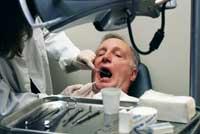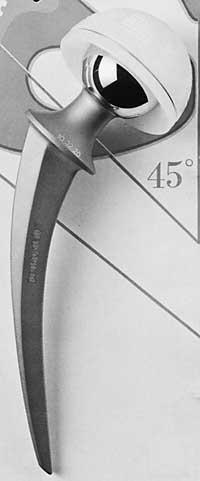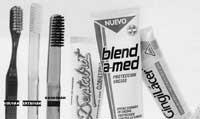Titanium Mouths
2000/03/05 Kortabarria Olabarria, Beñardo - Elhuyar Zientzia
Titanium is a chemical element of the metal group. It has 22 atomic numbers, with 22 electrons and its mass number is 48 -sum of protons and neutrons in the nucleo-.
Minerals containing titanium are quite common. This metal has a very low density and very high hardness, besides not being excessively damaged by rust. Titanium is burned in the air. This last feature makes titanium highly appreciated for the manufacture of fireworks.
In addition to on Earth, titanium has been found in some meteorites and is part of the Sun. It has also been discovered in some rocks collected on the Moon, in the form of titanium dioxide (Ti02). As in our Sun, this metal has been found in stars with other characteristics.
Taking into account all the aforementioned features, especially in low density and high hardness, lately it is being used in numerous low-weight metal parts: watch straps, bicycles, tennis rackets, cosmetic surgery, etc. and in oral surgery -beautification or reparation-.
Artist Irrifarre
Those who regularly go on TV, in the photos of magazines, etc., have a good ridicule, it is the result of a perfect tooth. Some of them may have beautiful teeth on their own, but they have surely spent hours in the dentist's chair. They will have a lot of titanium inside the mouth.
And it is that titanium, in addition to being one of the least weight materials husband, is biocompatible. Therefore the body does not reject titanium implants, and therefore it is used both to beautify the mouths. As with the body, titanium can be combined with materials such as ceramics, noble alloys, various metals… and laser welding. As it can be used with laser, titanium is very suitable for repairs on dental teeth, since on the one hand it does not heat and on the other it can perform high precision work. At present, all these welding operations are carried out simply and with great guarantee.
Especially in implants

The field of dentistry has advanced greatly in recent years: anesthesia is barely noticeable, fillings and other jobs leak painlessly… but the greatest advance has occurred in implants, no doubt. The implant is not a new invention, but until now the techniques and resources needed for the implant have not been developed. The use of implants is very old. According to the remains found in Egypt, they were also used in the times of the pharaohs. During the Modern Age, implants began to develop in the 1970s, since traumatologist Ingmar Bränemark discovered osseointegration, that is, since there was no soft tissue between them, until he found a way to tie the bone to another material. Thus, the greater consistency of the teeth decreased the risk of infections. The finding of the traumatologist was somewhat strange. He researched bone circulation with rabbits, so he introduced fiber optics into the rabbit bone to see what was happening inside through the microscope. A few weeks he realized that it was impossible to remove the fiber, since the titanium that covered the optical fiber joined the bone. Since then the technique has been advanced and the implants are a reality -face but real-.
The implant is a prosthesis that anatomically, functionally and aesthetically replaces the yew or blade that has been lost. Depending on where they are located, they can be very varied: Inner bones, based on the inside of the bone. The integrated bones should be taken care of once placed for 6 months to place the fixed prosthesis. The integrated bony fibers, using fiber, are implanted in a single session and the provisional fixed prosthesis.
Implants are performed under local anesthesia. The implant is not painful, but usually after placing it a break of one or two days is recommended. There are no problems generating rejection, since titanium is a biocompatible material. The important thing is that the bone on which it rests is healthy, that there is no discomfort in the jaw.
However, since it is an implant operation, there is a certain postoperative routine. It is recommended to freeze 24 hours and take antibiotics in a week, eat purees, etc. for two days, so that he may curse more quickly.
If you fill your mouth with titanium, you decide to fix it and repair it, you will have precious teeth, you will feel more comfortable talking, chewing, smoking… but you will still have more hole in your pocket than in your mouth. In fact, implants are a very suitable solution to repair teeth forever, but at the same time expensive. Titanium is not too much to blame.
Published in 7

Gai honi buruzko eduki gehiago
Elhuyarrek garatutako teknologia






